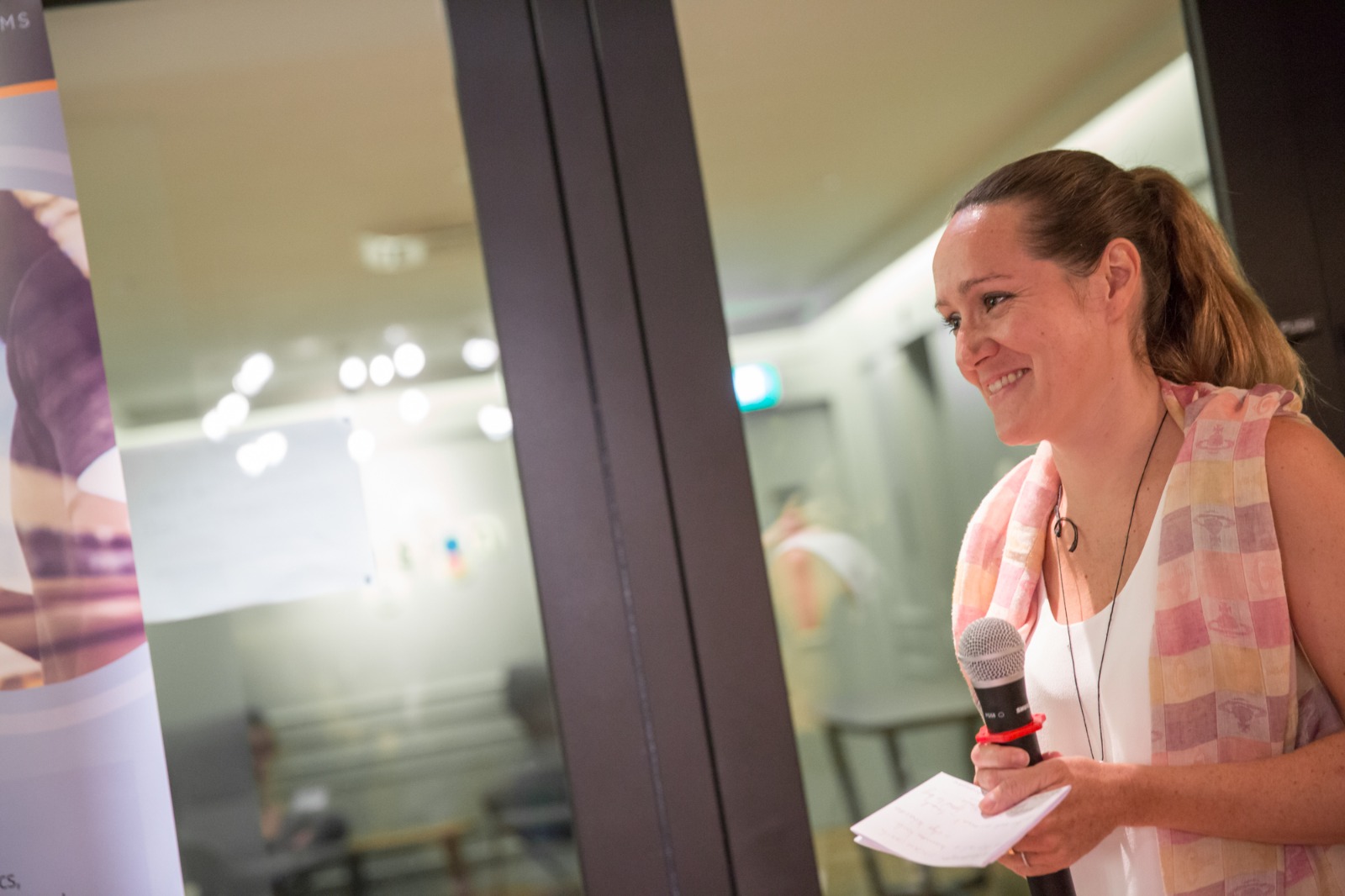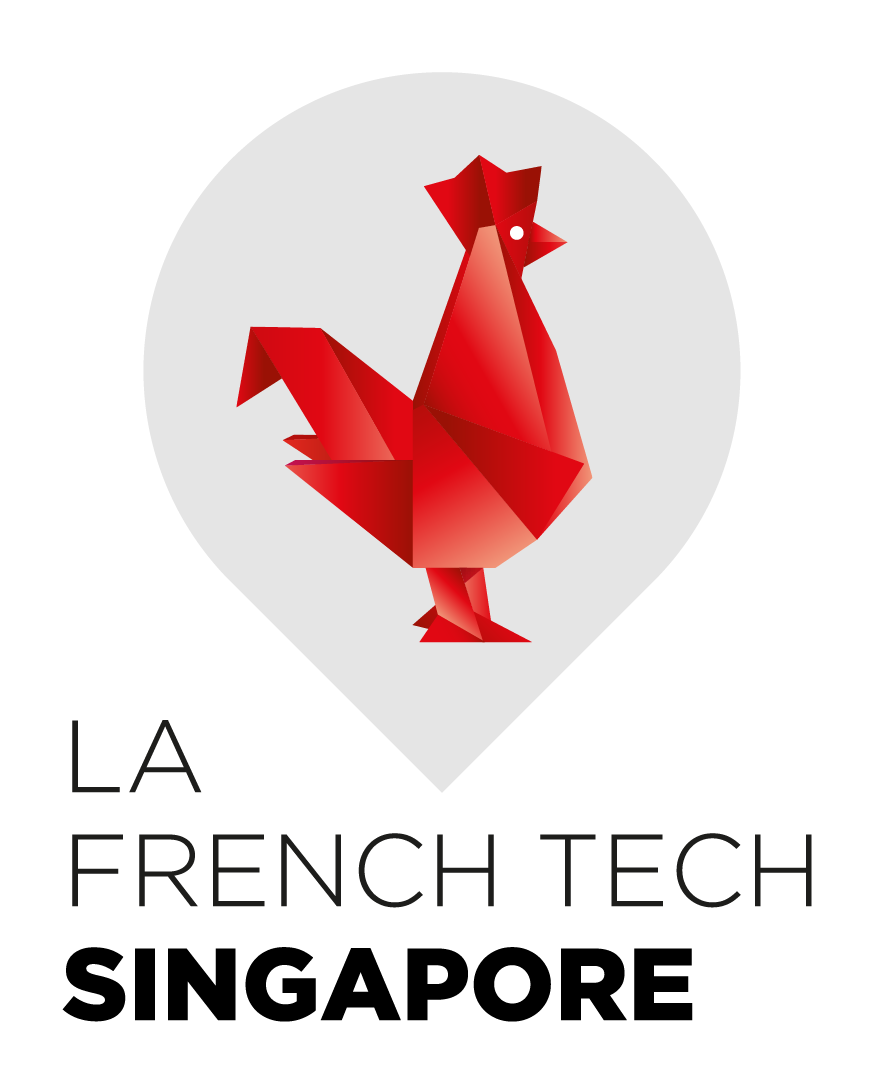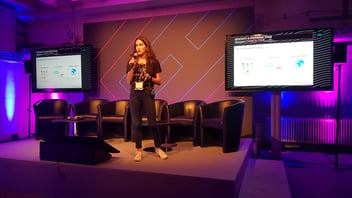
Smart health is no longer Science fiction
Hi Maryline, so what do you do and what brought you to Asia?
I was raised as an expat kid in Saudi-Arabia in the 90s, always wanted to travel more. So I worked on 3 continents, had a child on each of them, one born in NY, one in France and finally one in Singapore.
Lately in Europe we kept talking about inflation, unemployment. So Singapore being the Asian Silicon Valley hub for health tech, in 2015, my husband and I decided to join the health innovation hub. The city has created an ecosystem which supports start-ups and has a structured approach to sharing examples of best practices and continuous dialogue with government bodies.
So for the past 5 years I worked exclusively on population health problems with tech start-ups to gain understanding of the region, built a network, leveraged my corporate background to build partnerships.
Our family obtained permanent residency late 2019, so we are here for a longer ride than imagined.
Two decades after Investment Banking, how did you end up in healthtech?
I always was a salesperson: I sold syndication deals in banking (looking for money with other banks to lend to a client), then consulting projects, then commercial roles in the pharmaceutical industry and finally managed business development operations for start-ups.
My entire career I felt limited in terms of innovation, product development. So after a few years I went back to school. As I was in professional services and wanted to specialise, In 2008, I decided to go back to school. l went to INSEAD and graduated with an MBA a year later. That year gave me the time to think, to meet people and to pause.
I wanted to align my job with my values. I concluded there would always be people in needs of food or health care. I got a job in both industries.
You can guess; I joined the pharma industry in the largest healthcare company. I spent over 7 years at Johnson & Johnson. I loved the experience, the people…But I needed to explore further.
After spending years to launch new drugs in several markets in Europe, trying to convince doctors to change their practice, influence guidelines for new protocols, something bothered me: what does the patient have to say? What does he understand?
So I went to the new head of Diabetes in Europe and pitched him the idea to develop an “Around the pill” solution, to go beyond the clinical evidence of a product and support the patients with their struggle in their lives. Patients with chronic conditions such as Diabetes, Asthma, hypertension, …struggle far beyond the prescription. I became a Health solution leader, someone that spends time to put the patient at the center of a solution he creates.
Once you understand the patient journey, the stakeholders he meets along the way, the problems he faces, you find solutions to support each individual, the limitation being scalability of such solution. As I wanted to give access, knowledge, support, care to more, technology appeared to me as the way forward.
So here you go, from banking to digital health. It took me a good 15 years to realise I was going to need technology and become a woman in tech in Asia! 💪
What are the main challenges today in Healthtech and Digital Health in Singapore or in Asia?
Healthtech is a way to improve health through technology. Digital health is an even broader umbrella term, which can be defined as an emerging health area that uses brand new digital or medical technologies involving genomics, big data, wearables, mobile applications, and artificial intelligence.
For example, your Apple watch detects atrial fibrillation, hypertension, sleep apnea, even diabetes, helps you remember to take a pill, monitor your heart beats, count your steps, this tricorder is now a reality. For StarTrek fans, the hand-held medical instrument that Dr. McCoy used for checking a patient’s health is on your wrist…You still need algorithms based on the data provided by medical devices or your phone, or your watch to predict: from simple things such as your menstrual cycle to try to conceive, your pill reminders (3 times a day for a life time is a lot to remember), or more sophisticated, your next heart or asthma attack. This prediction will allow you sufficient time to not reach the A&E and act on it before it happens. The health solutions are more and more personalised and allow interventions before it’s too late.
Healthtech is a revolution itself in the healthcare world. We have moved from hospital to look after the ill in the 1930s called “Hotel Dieu” in French, “God’s hotel” where you wait for death or survive, to new drugs like “penicillin”, imagery for surgeries, to today: healthtech.
If you think about mental health, dementia or schizophrenia. How do you assess a patient? You need to go and see a specialist, which means you need to say it, realise what you are suffering from. Time to diagnosis in mental health is 5 to 15 years… To reduce time to diagnosis, tech comes into play. You take some cognitive assessments, brain games, monitor some of your pain, when it happened, what happened, for how long it happened all at home, or from everywhere I should say thanks to devices such as your phone, your watch, etc…
With healthcare, technology faces some of the usual challenges around tech but with health we are all scared someone will know something we don’t want to tell:
- Privacy is high on the list of concerns for everyone. Cybersecurity standards are really important.
- Next would be both patient experience from a consumer standpoint, enjoying care was never key concerns to doctors or hospitals, but today a lot of people work on improving, and making experience easier, smoother, less scary.
- Probably what would come in 3rd place would be affordability, cost. A lot of people on this planet suffer and cant access care. Digital is here to offer scalability, cheaper way to provide support, care to more.
How do you feel you are on the right track of proving health tech works?
First you look at what success may look like somewhere else.
Livongo has successfully IPOed with their app focused on managing chronic conditions starting with diabetes. So financial exit is one way to look at it.
And so there are many apps emerging today in this region that I am excited about: Livemore, Feeleat, Savonix, CancerAid, Wellthy therapeutics, Togetherforher probably is my favorite…
These digital health apps are making life easier for the user and are proving to save costs. What is the end goal for their founders? In this industry and particularly Healthtech start-ups founders, I mostly come across people that have population health as an end goal and usually have been confronted themselves in managing a disease of a loved one.
If you take “TogetherforHer”, an Indian app which supports mothers all along their pregnancy to reduce risks for the child to be born and the mothers, and to contain the cost: The founder, Nayan Kalnad, a friend I met while at JnJ, is a doctor by training. After a few years of practicing went back to business school and launched his start-up with one goal only : to personalize care and improve health outcomes for the patient. I am so proud of his work and the number of lives he has transformed in the UK and India.
So, how does the role of doctors evolve?
Thanks to the use of large datasets (including genomic data) to offer “precision medicine” patients will eventually get the best or most appropriate treatment for their problem. It greatly increases the complexity of diagnostic and therapeutic decisions made by physicians. But tech and health data integration with AI will ease the doctor’s work in terms of diagnoses and treatment choices and eventually improve health outcomes. Once again, technology alone is insufficient but physicians will need to be trained continuously in this new era of precision medicine. Of course, no matter how sophisticated and successful healthcare technologies may become, doctors are still people treating other people (patients)…
I understand you recently joined APACMed, a trade association representing both large MNcs and start-ups.
What are the main challenges of representing both groups?
MNCs and large insurers are set up for 100s of years, have processes and resources (FTE and $). A startup has none: no money, no resources, no processes, it all lies in its people and their willingness and motivation to make it happen. I feel having worked in both allows me to understand the needs of each group and ensure to serve all our members according to those needs.
Non for profit associations, such as APACMed, are here to represent a neutral party when talking to government bodies and have one voice when discussing medtech matters. Apacmed’s mission is to improve the standards of care for patients. As such, we work on 3 main workstreams: regulatory, market access and recently digital health for medtech. APACMed helps MedTechs navigate the increasingly complex and fragmented regulatory landscape. APACMed provides access to relevant regulatory intelligence for its members, advocates convergence in regulatory requirements where possible across Asia Pacific countries, facilitates collaboration between government, non-government and industry stakeholders to improve patient access to medical technologies
The problem is that most of the regulations do not align with digital health since they currently target traditional medical technologies, not digital health technologies. However some countries such as Korea or Singapore are leading the way. Korea is one of the leading countries in digital health regulation, for example, by the Korean MFDS issuing the first medical AI software regulation guidelines in December 2017. I think where there is a lot of innovation, governments are trying to accelerate the adoption of such frameworks.
Our day-to-day complications at APACMed is to deal with 3 different groups that have different timeline and time to decision. This is a challenge that the team is addressing by constantly communicating with all stakeholders and find innovative ways to collaborate. Collaboration is key to innovation success and the team know-how about how to become involved is key.
What are the big innovations you are looking for to accelerate what you are trying to achieve?
Cloud IoT is the backbone of the future of all healthcare systems. By providing objects with sensors to monitor their environment and an internet connection to communicate, the Internet of Things will give organisations greater ability to gather data and report back in real time. The big benefits are for patient care enabling hospitals and doctors in the community to track and monitor patients from the moment they arrived at hospital or even in the home before that. For example, being able to track stroke signs 2, 6 or 12 hours before it happens. Patients would not arrive in distress at the A&E but would be called and brought to the hospital conscious and treated before it happens!
Then 5G will enable to transfer faster, to download faster, to be able to decide faster. For instance you can do a surgery remotely because it’s instantaneous.
I would say to close the loop, refocusing on customer, and here we mean patients, organizations will collaborate to improve user experience through API integration. There is a space to build platforms that would group 20/30/50 healthtech companies to serve millions of users and their families across therapeutic areas. All stakeholders collaborate to achieve healthcare cost savings and improve health outcomes.
Let’s dream a little bit; If you had the capabilities to send the best doctor across the ocean to save a life, it would be wonderful! This is how our lives will get to be more like “Star Trek”, we will teletransport ourselves for better care wherever it is needed.
Finally, I wish we had found the “eternal sunshine pill” to keep my father alive. He passed away last year of cancer, he was only 64. He had entered this peaceful age of reason, I loved his grey hair and his stories. Cancer stole him from me, from us. We love older generations spirits and experiences sharing. Alzheimer and Cancer are too present in our lives. So as much as I am not in favour of erasing my wrinkles, I want to keep my souvenirs longer…
How “Dare you” to be a woman in health tech? How do you bring more diversity?
First, not being tech myself, I trained, studied AI online executive course with MIT, I go to conferences and read a lot. So I can testify how to become a woman in tech as a non tech background is possible. Diversity is not only in gender, I know I am an extrinsic choice for employers. I cultivate my differences and attract people who don’t feel traditional…
A few other diversity initiatives:
- I have only hired women in the past 5 years. This has become my trademark!
- I mentor a lot of post maternity women who want to return to work.
- I collaborate with Insead Women Alumni Club. I am co-president of Insead Healthcare Alumni Club and we co-organize events bringing women leaders in healthcare.
Maryline, thank you ! LinkedIn Maryline Marquet
Get in touch with us @ womenfrenchtech at gmail dot com
In collaboration with Amel Rigneau & Sophie Guo



